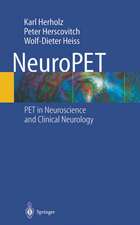Quantum Dots: a Doorway to Nanoscale Physics: Lecture Notes in Physics, cartea 667
Editat de Wd Heissen Limba Engleză Hardback – 4 mar 2005
| Toate formatele și edițiile | Preț | Express |
|---|---|---|
| Paperback (1) | 381.81 lei 6-8 săpt. | |
| Springer Berlin, Heidelberg – 22 oct 2010 | 381.81 lei 6-8 săpt. | |
| Hardback (1) | 389.11 lei 6-8 săpt. | |
| Springer Berlin, Heidelberg – 4 mar 2005 | 389.11 lei 6-8 săpt. |
Din seria Lecture Notes in Physics
- 19%
 Preț: 424.00 lei
Preț: 424.00 lei - 17%
 Preț: 360.73 lei
Preț: 360.73 lei -
 Preț: 429.22 lei
Preț: 429.22 lei - 17%
 Preț: 427.62 lei
Preț: 427.62 lei - 17%
 Preț: 460.26 lei
Preț: 460.26 lei -
 Preț: 427.96 lei
Preț: 427.96 lei -
 Preț: 481.93 lei
Preț: 481.93 lei - 17%
 Preț: 494.66 lei
Preț: 494.66 lei -
 Preț: 281.90 lei
Preț: 281.90 lei - 17%
 Preț: 493.20 lei
Preț: 493.20 lei - 17%
 Preț: 426.72 lei
Preț: 426.72 lei -
 Preț: 365.15 lei
Preț: 365.15 lei -
 Preț: 374.52 lei
Preț: 374.52 lei -
 Preț: 407.98 lei
Preț: 407.98 lei - 20%
 Preț: 428.13 lei
Preț: 428.13 lei -
 Preț: 263.30 lei
Preț: 263.30 lei - 15%
 Preț: 593.73 lei
Preț: 593.73 lei - 15%
 Preț: 528.13 lei
Preț: 528.13 lei -
 Preț: 493.12 lei
Preț: 493.12 lei - 17%
 Preț: 425.68 lei
Preț: 425.68 lei -
 Preț: 280.65 lei
Preț: 280.65 lei -
 Preț: 163.41 lei
Preț: 163.41 lei - 18%
 Preț: 726.59 lei
Preț: 726.59 lei -
 Preț: 394.84 lei
Preț: 394.84 lei - 15%
 Preț: 709.63 lei
Preț: 709.63 lei - 15%
 Preț: 623.90 lei
Preț: 623.90 lei - 20%
 Preț: 476.93 lei
Preț: 476.93 lei - 15%
 Preț: 428.05 lei
Preț: 428.05 lei -
 Preț: 342.78 lei
Preț: 342.78 lei - 18%
 Preț: 851.93 lei
Preț: 851.93 lei -
 Preț: 346.61 lei
Preț: 346.61 lei -
 Preț: 391.57 lei
Preț: 391.57 lei - 15%
 Preț: 633.16 lei
Preț: 633.16 lei -
 Preț: 451.71 lei
Preț: 451.71 lei - 5%
 Preț: 1497.80 lei
Preț: 1497.80 lei -
 Preț: 374.85 lei
Preț: 374.85 lei -
 Preț: 380.07 lei
Preț: 380.07 lei - 15%
 Preț: 516.14 lei
Preț: 516.14 lei - 15%
 Preț: 583.78 lei
Preț: 583.78 lei - 15%
 Preț: 508.60 lei
Preț: 508.60 lei -
 Preț: 469.73 lei
Preț: 469.73 lei -
 Preț: 388.90 lei
Preț: 388.90 lei - 15%
 Preț: 500.24 lei
Preț: 500.24 lei -
 Preț: 386.52 lei
Preț: 386.52 lei - 15%
 Preț: 472.88 lei
Preț: 472.88 lei -
 Preț: 424.27 lei
Preț: 424.27 lei -
 Preț: 380.07 lei
Preț: 380.07 lei - 15%
 Preț: 500.01 lei
Preț: 500.01 lei
Preț: 389.11 lei
Nou
Puncte Express: 584
Preț estimativ în valută:
74.46€ • 79.62$ • 62.08£
74.46€ • 79.62$ • 62.08£
Carte tipărită la comandă
Livrare economică 18 aprilie-02 mai
Preluare comenzi: 021 569.72.76
Specificații
ISBN-13: 9783540242369
ISBN-10: 3540242368
Pagini: 188
Ilustrații: X, 174 p.
Dimensiuni: 155 x 235 x 16 mm
Greutate: 0.44 kg
Ediția:2005
Editura: Springer Berlin, Heidelberg
Colecția Springer
Seria Lecture Notes in Physics
Locul publicării:Berlin, Heidelberg, Germany
ISBN-10: 3540242368
Pagini: 188
Ilustrații: X, 174 p.
Dimensiuni: 155 x 235 x 16 mm
Greutate: 0.44 kg
Ediția:2005
Editura: Springer Berlin, Heidelberg
Colecția Springer
Seria Lecture Notes in Physics
Locul publicării:Berlin, Heidelberg, Germany
Public țintă
ResearchCuprins
The Renormalization Group Approach – From Fermi Liquids to Quantum Dots (R. Shankar).- Semiconductor Few-Electron Quantum Dots as Spin Qubits (J.M. Elzerman et al.).- Low-Temperature Conduction of a Quantum Dot (M. Pustilnik and L. Glazman).- Andreev Billiards (C.W.J. Beenakker).
Textul de pe ultima copertă
Quantum dots, often denoted artificial atoms, are the exquisite tools by which quantum behavior can be probed on a scale appreciably larger than the atomic scale, that is on the nanometer scale. In this way, the physics of the devices is closer to classical physics than that of atomic physics but they are still sufficiently small to clearly exhibit quantum phenomena. The present volume is devoted to an introduction to some of these fascinating aspects, addressing in particular graduate students and young researchers in the field. In the first lecture by R. Shankar the general theoretical aspects of Fermi liquids are addressed, in particular the renormalization group approach. This is then aptly applied to large quantum dots. A completely different approach is encountered in the second contribution by J.M. Elzerman et al. in that it is a thorough experimental expose of what can be done or expected in the study of small quantum dots. Here the emphasis lies on the electron spin to be used as a qubit. In the third lecture series, by M. Pustilnik and Leonid I. Glazman mechanisms of low-temperature electronic transport through a quantum dot -- weakly coupled to two conducting leads -- are reviewed. The fourth series of lectures by C.W.J. Beenakker deals with a very interesting aspect of nanophysics: a peculiar property of superconducting mirrors discovered by Andreev about forty years ago and still a challenge to experimental physicists.
















